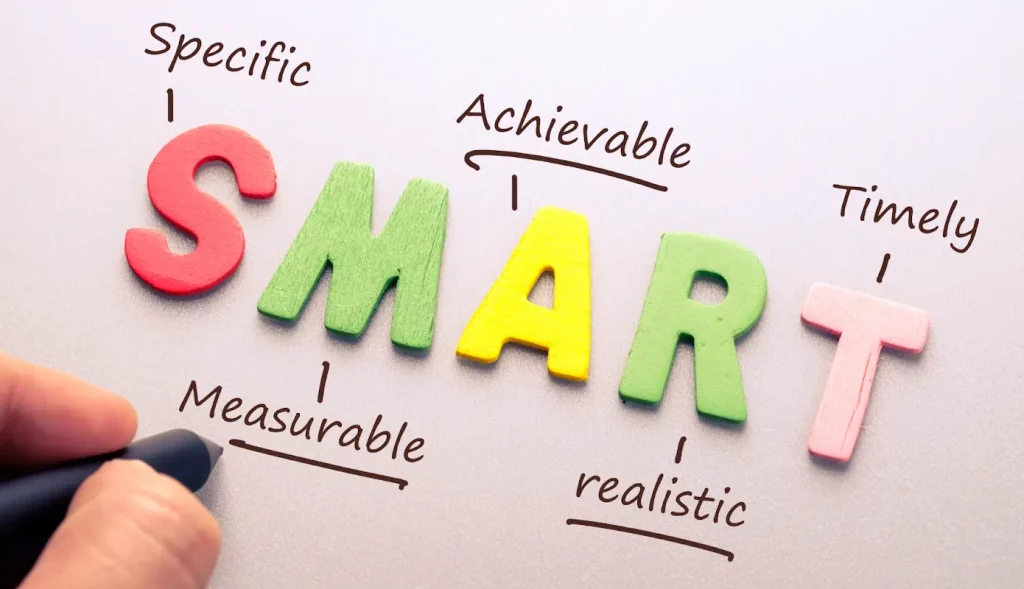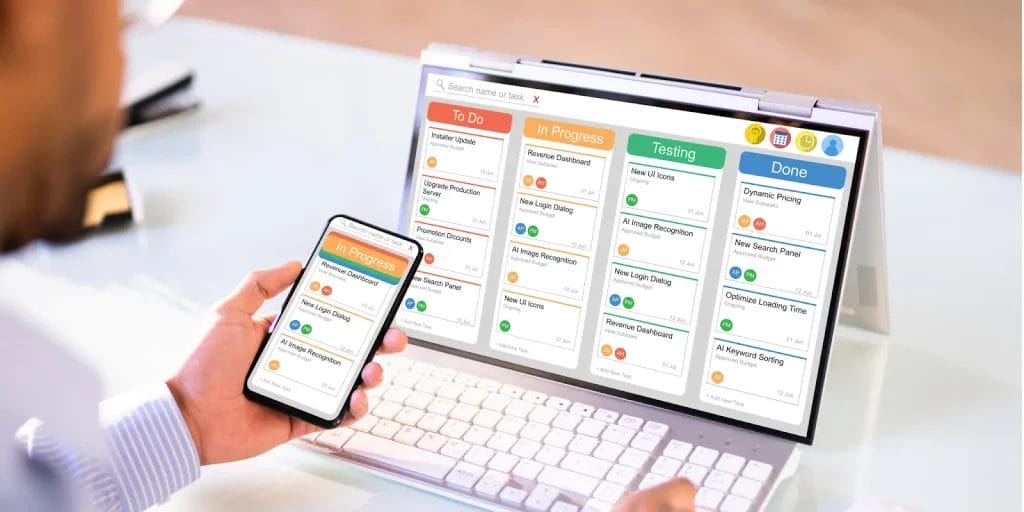Are you a life coach looking to improve your coaching skills and help clients succeed? In this blog, we’ll explore the top 10 proven life coaching tools that have helped many individuals overcome obstacles, gain clarity, and achieve their goals. So, whatever type of life coach you may be, these life coach tools and techniques will elevate your coaching practice and empower you to guide clients toward success.
Life Coaching and Its Benefits
Life coaching serves as a valuable resource for personal development. It involves partnering with a professional life coach to identify goals, overcome challenges, and foster positive changes. The advantages include gaining clarity, deepening self-awareness, and aligning with personal values. Life coaching aids in setting and achieving meaningful goals, providing a sense of purpose and fulfillment.
Moreover, it enhances self-confidence, improves relationships, and improves overall well-being. Life coaching is a powerful tool for significant personal and professional growth.

The Importance of Life Coaching Tools
Life coaching tools play a crucial role for coaches and clients by offering structure, guidance, and support throughout the coaching journey. Similar to the essential life coaching skills every coach should know, life coach tools and techniques enable coaches to communicate effectively and devise strategies for clients’ personal growth. They assist clients in gaining clarity, setting goals, and implementing action plans for desired outcomes.
Life coaching tools empower individuals to overcome obstacles and lead fulfilling lives. Without these tools, the coaching process would lack direction and effectiveness, underscoring their integral role in the coaching experience.
Essential Life Coach Tools and Techniques
To effectively support their clients, life coaches need to have a wide range of tools and techniques at their disposal. Let’s dive in!

1. Wheel of Life
The Wheel of Life is a widely used life coaching tool used to evaluate various aspects of a person’s life. It’s a circular diagram divided into sections, each representing a specific area like career, health, relationships, and personal growth. By rating satisfaction levels in each section, individuals can pinpoint areas for improvement and set goals for personal development. This visual tool aids in prioritizing areas needing attention, fostering awareness, and achieving balance.
The Wheel of Life is commonly applied in coaching sessions, therapy, and self-reflection exercises to promote overall life awareness and equilibrium.

2. Goal-Setting Worksheet
A goal-setting worksheet proves invaluable for individuals or teams in planning and tracking their goals. It enables the clear definition of objectives, setting measurable targets, and outlining the necessary action steps for achievement. This worksheet acts as a visual guide, fostering focus and accountability throughout the goal-setting process. Breaking down goals into smaller, manageable tasks allows for progress tracking and adjustments as needed.
How to Create a Goal-Setting Worksheet for Clients
Crafting an effective goal-setting worksheet for clients involves a thoughtful and systematic approach. Follow these steps to create a worksheet aligned with your client’s aspirations and conducive to a successful goal-setting process:
- Understand Client Objectives
Begin by understanding your client’s overarching objectives. What do they aim to achieve, and within what timeframe? These details are crucial for tailoring the worksheet to their specific needs. - Identify Measurable Targets
Work with your client to identify measurable targets aligned with their goals. Whether it’s sales figures, fitness milestones, or personal development achievements, ensure these targets are quantifiable. - Break Down Goals
Help clients break down their larger goals into smaller, actionable tasks. This step is essential for creating an achievable roadmap that provides a sense of progress along the way. - Define Action Steps
Outline the specific actions required to achieve each smaller task. This clarifies the process and empowers clients with a concrete action plan. - Incorporate Timeframes
Assign realistic timeframes to each task and goal. This time-oriented approach adds urgency and helps clients stay on track. - Encourage Review and Adaptation
Emphasize the importance of regular reviews. The worksheet should not be static but adapt to changing circumstances and insights gained during the journey. - Provide Space for Reflection
Add sections for clients to reflect on their progress, challenges faced, and lessons learned. This reflective aspect enhances self-awareness and resilience.
Examples of Effective Goal-Setting Exercises
- SMART Goals Worksheet
- Vision Board Exercises
- SWOT Analysis for Goal Setting
- Prioritization Matrix
- Daily/Weekly Planner

3. Values Assessment
Values assessment is a key life coaching tool for understanding your client’s values and beliefs. It’s like a compass that helps you understand what truly matters and guides your client’s choices. By going through this process, you can help them sync up their lives with what’s genuinely important, making their life coaching journey more fulfilling and purposeful.
Types of Values Assessments Available
Selecting the appropriate values assessment method depends on the client’s preferences, comfort level, and the desired depth of insight. Here are some commonly used types of values assessments:
- Questionnaires and Surveys
Use structured questionnaires or surveys with carefully crafted questions to identify recurring themes and priorities based on client responses. - Values Cards or Sorting Activities
Provide clients with a set of value cards representing various principles. Ask them to sort and prioritize the cards, revealing core values through a hands-on approach. - Interviews and Conversations
Engage in open-ended conversations exploring personal experiences and emotions—extract values by delving into the stories and narratives shared by the client. - Visualizations and Imagery
Guide clients through visualization exercises, prompting them to imagine their ideal life. Analyze the created images and scenarios to extract underlying values and aspirations. - Role-playing Exercises
Encourage clients to engage in hypothetical scenarios mirroring real-life situations. Observe their decision-making process and identify values that surface during the role-play.
How to Interpret and Utilize Values Assessment Results
Making sense of and applying the results of a values assessment is pivotal in life coaching. These assessments shed light on an individual’s core values and the guiding principles that influence their choices and behaviors. By scrutinizing the assessment outcomes, life coaches can glean valuable insights into their clients’ priorities, motivations, and aspirations. Armed with this information, coaches can customize their approach and strategies to resonate with their clients’ values, leading to more impactful and meaningful coaching sessions.
Moreover, the results serve as a launchpad for goal-setting and personal development. Clients can pinpoint areas misaligned with their values and work towards crafting a more fulfilling and purposeful life.
4. Strengths Finder
Strengths Finder stands out as a popular assessment tool designed to help individuals uncover their distinctive strengths and talents. Rooted in the idea that emphasizing strengths rather than weaknesses leads to increased success and satisfaction, the Strengths Finder assessment reveals an individual’s top five strengths out of a list of 34 different themes.
This valuable information becomes a compass for personal and professional growth, enhancing communication and collaboration within teams. Widely embraced by individuals, organizations, and life coaches, the Strengths Finder assessment has become a go-to resource for unlocking potential and optimizing performance.

5. Visualization Exercises
Visualization exercises stand out as a valuable tool in the toolkit of life coaches, contributing to improved mental focus, stress reduction, and overall well-being for their clients. These exercises involve harnessing the imagination to create vivid mental images of specific scenarios or outcomes. By incorporating visualization into their clients’ routines, life coaches can assist in training the brain for heightened focus and presence. This, in turn, facilitates the achievement of goals and the cultivation of positive outcomes.
Visualization Techniques and Exercises
Visualization techniques add a dynamic and personalized dimension to life coaching sessions, fostering a deeper connection with clients and enhancing the overall coaching experience. Here are some visualization techniques that life coaches can seamlessly integrate into their sessions:
- Guided Imagery
Lead clients through a narrative, encouraging them to visualize specific scenes or scenarios. - Future Self Visualization
Guide clients in imagining their future selves, successes, and content. Explore the details of their surroundings, emotions, and accomplishments. - Goal Achievement Movie
Encourage clients to create a mental movie showcasing the journey of achieving a particular goal. - Mindful Visualization
Combine visualization with mindfulness techniques. Guide clients in being fully present in the imagined scenario, focusing on sensory aspects without judgment. - Positive Affirmation Visualization
Encourage clients to visualize positive outcomes while affirming their capabilities and strengths. - Stress Reduction Imagery
Guide clients in creating a mental safe space for retreat during stressful moments. Help them visualize a serene environment to promote relaxation and reduce stress. - Vision Board Creation
Extend the visualization exercise to a tangible form by creating a vision board. - Daily Routine Visualization
Encourage them to mentally go through their daily routine, visualizing positive interactions and accomplishments.

6. Time Management Tools
Mastering time management is a game-changing life coaching tool. It’s about helping individuals make the most of their time to achieve goals and boost productivity. To assist clients in this journey, life coaches often tap into an array of time management tools—think calendars, planners, task apps, and timers.
These life coach tools and techniques guide the client in prioritizing tasks, setting realistic deadlines, and tracking progress. It’s like giving them a roadmap to navigate their day effectively. With these time management tools, life coaches empower clients to create a sense of order, alleviate stress, and find that sweet spot for a more balanced work-life harmony.

7. Journaling Prompts
Journaling prompts are a valuable life coaching tool. They involve giving clients thoughtful questions to explore their thoughts and feelings more deeply. These prompts promote self-reflection, self-discovery, and personal growth. Through journaling, individuals can freely express themselves without judgment, leading to increased clarity and insights. Life coaches can incorporate these prompts into sessions to help clients better understand themselves.
Examples of Journaling Prompts for Different Areas of Life
Journaling prompts can be tailored to address various aspects of an individual’s life, encouraging a comprehensive exploration of thoughts and emotions. Here are examples of prompts for different areas of life:
- Personal Development
What are three qualities you admire in yourself, and how can you further cultivate them? - Career Exploration
Describe a work-related achievement that made you proud. What skills did you utilize, and how can you apply them in future endeavors? - Relationships
Reflect on a meaningful relationship in your life. What aspects contribute to its significance, and how can you nurture those elements in other relationships - Goal Setting
Define a short-term and a long-term goal. What steps can you take today to move closer to these objectives? - Gratitude Practice
List three things you’re grateful for today and reflect on why they bring you joy. - Overcoming Challenges
Describe a recent challenge you faced. How did you navigate it, and what did you learn from the experience? - Mindfulness and Well-being
Explore a moment of mindfulness from your day. What sensations, sounds, or sights stood out to you? - Values Exploration
Identify three core values that guide your decisions. How do these values align with your current life choices? - Creativity Boost
If you could pursue any creative endeavor without fear of judgment, what would it be? How can you incorporate elements of this into your life? - Self-Care Assessment
Evaluate your self-care routine. What activities rejuvenate you, and how can you prioritize them?
8. Emotional Intelligence Assessment
Emotional intelligence assessment helps coaches understand how well clients recognize and handle their own emotions and empathize with others. It serves as a launchpad for coaching sessions, pinpointing areas where clients might benefit from support. The outcome? Improved personal and professional relationships, heightened self-awareness, and an overall boost in well-being. This is a strategic move to foster growth and better connections that successful life coaches often use.
9. Accountability Systems
One of the most commonly used life coaching tools, accountability systems play an important role in holding clients accountable by setting specific targets and consistently monitoring their progress. With a well-defined framework, life coaches assist clients in staying focused and motivated while offering guidance and feedback. By incorporating these systems, clients take responsibility for their actions, actively working towards desired outcomes. This approach not only ensures progress but also contributes to personal growth and success.

10. Feedback and Evaluation
Offering feedback provides clients with insights into their strengths and areas needing improvement, enabling them to make necessary adjustments in their journey toward achieving goals. Simultaneously, the evaluation process serves as a tool for both the coach and the client to assess the overall effectiveness of the coaching sessions. Through regular evaluation, the coach can pinpoint what is working well and identify areas that may need modification.
How to Provide Constructive Feedback to Clients
When providing feedback, it’s essential to approach the conversation with empathy and understanding. Begin by recognizing and appreciating the client’s efforts and progress, highlighting their strengths and areas for improvement. Make the feedback specific by offering examples and suggesting practical steps they can take to overcome challenges or enhance their performance. Keep the tone positive and supportive, focusing on the client’s potential and opportunities for growth.
Encourage open communication, allowing the client to share their thoughts and concerns. The aim of constructive feedback is to empower clients, foster a sense of ownership over their personal development, and inspire positive changes in their lives.
Online Life Coaching Tools
In the digital age, life coaching has evolved to incorporate various online tools, enhancing accessibility, collaboration, and the overall coaching experience for both coaches and clients.
1. Coaching Software
Online life coaching has seen significant advancements, notably with the introduction of all-in-one coaching software. This innovative solution consolidates various features into a unified platform, streamlining session management, client progress tracking, and communication for coaches.
With scheduling tools, progress dashboards, and secure messaging systems, this software optimizes the coaching experience. For coaches, it facilitates efficient organization, session scheduling, goal setting, and progress tracking within a centralized interface. An example of this is Paperbell’s Coaching Software.

2. Video Conferencing Apps
Utilize video conferencing tools such as Zoom, Teams, or Skype for immersive online visualization exercises. This approach allows clients to vividly picture their goals and aspirations from the convenience of their own space.
3. Cloud-based Journaling Apps
Integrate cloud-based journaling applications into your coaching toolkit. These apps offer a secure and easily accessible platform for clients to engage in reflective journaling, ensuring they can capture thoughts and insights anytime, anywhere.
4. Virtual Accountability Systems
Incorporate virtual accountability systems that enable coaches and clients to stay connected between sessions. These systems typically include goal tracking, reminders, and progress updates, fostering a sense of responsibility and commitment.
FAQs About Life Coaching Tools
What Is Life Coach Insurance, and Why Do Life Coaches Need It?
Life coach insurance is a specialized liability insurance crafted to safeguard life coaches from potential risks and liabilities. Given the nature of their work, where they guide clients in achieving personal and professional goals, there’s an inherent risk—the guidance and advice given may be perceived as negligent or harmful by a client. Life coach insurance steps in to provide coverage for claims like professional negligence, bodily injury, property damage, and other liabilities that might arise during coaching services.
What Types of Coverage Are Included in Life Coach Insurance?
Life coach insurance typically includes coverage for general liability, professional liability (also known as errors and omissions insurance), and cyber liability insurance.
Are There Any Exclusions or Limitations in Life Coach Insurance Policies That Coaches Should Be Aware Of?
Exclusions and limitations in life coach insurance policies can vary based on the insurance provider and the specific policy. Common exclusions might involve high-risk activities like extreme sports or therapies involving physical contact.
Coaches should carefully review their insurance policies to understand any exclusions or limitations and ensure they have sufficient coverage tailored to their specific coaching practices.
Enhance Your Coaching Toolkit with Life Coach Insurance
Elevate your coaching journey with the indispensable tool every life coach needs—life coach insurance. Safeguard your practice and enhance your coaching experience. Take the first step today and complete your online life coach insurance application in 10 minutes or less!
Build a Resilient Future for Your Business





